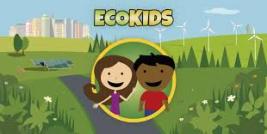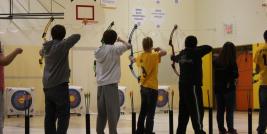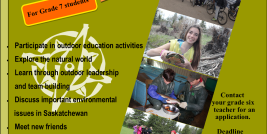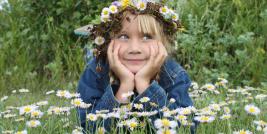| Curriculum Connections |
|
Outcomes
|
Indicators
|
Grade 6
|
Phys Ed
|
PE6.10 Apply controlled use of selected movement skills and variations (i.e., locomotor, non-locomotor, and manipulative skills) as well as safe and environmentally friendly behaviors while participating in a variety of alternative environment activities and body management activities including dance and educational gymnastics, as well as others.
|
c,d,e,f
|
|
Phys Ed
|
PE6.13 Analyze and apply safety guidelines and rules that apply to the target games, invasion/territorial games, and alternate environment activities to develop an appreciation of their impact on self and others.
|
d
|
Grade 7
|
Health
|
USC7.5 Evaluate personal food choices and needs by applying accurate and current nutritional knowledge (e.g., content labels).
|
e
|
|
Phys Ed
|
PE7.9 Utilize selected movement skills and combinations of skills (i.e., locomotor, non-locomotor, and manipulative) to participate in a variety of alternate environment activities and body management activities including dance and educational gymnastics, as well as others.
|
a,c,e
|
|
Phys Ed
|
PE7.14 Examine, evaluate, and represent both the historical and present impact of Canada's Northern people on the development of movement activity options as a means of supporting the well-being of self and others.
|
c,d
|
Grade 8
|
Math
|
N8.3 Demonstrate understanding of rates, ratios, and proportional reasoning concretely, pictorally, and symbolically.
|
a,b,g
|
|
Science
|
FD8.2 Examine the effects of forces in and on objects in fluids, including the buoyant force.
|
b,f,i
|
|
Health
|
USC8.6 Examine and assess the concept of sustainability from many perspectives, and develop an understanding of its implications for the well-being of self, others, and the environment.
|
b,c
|
|
Phys Ed
|
PE8.8 Apply and adapt selected activity-related skills (e.g., carrying, paddling, gripping, hanging, wheeling, digging, fire building, snow ploughing, compass reading) and strategies required for participation in alternate environment activities (e.g., backpacking, hiking, cycling, overnight camping, canoeing, snowshoeing, wall climbing, in-line skating, skate boarding, cross-country skiing, tracking, roping, dog sledding, skating, orienteering, downhill skiing, tobogganing, quinzhee building).
|
a,c,d,e,g,h,i,j
|
|
Phys Ed
|
PE8.12 Demonstrate the skills required to administer basic first aid (e.g., scene management, seeking help, treating minor injuries, applying precautions for body fluids) required as a result of injury caused by participation in movement activities.
|
a,b,c,d,e,f
|





